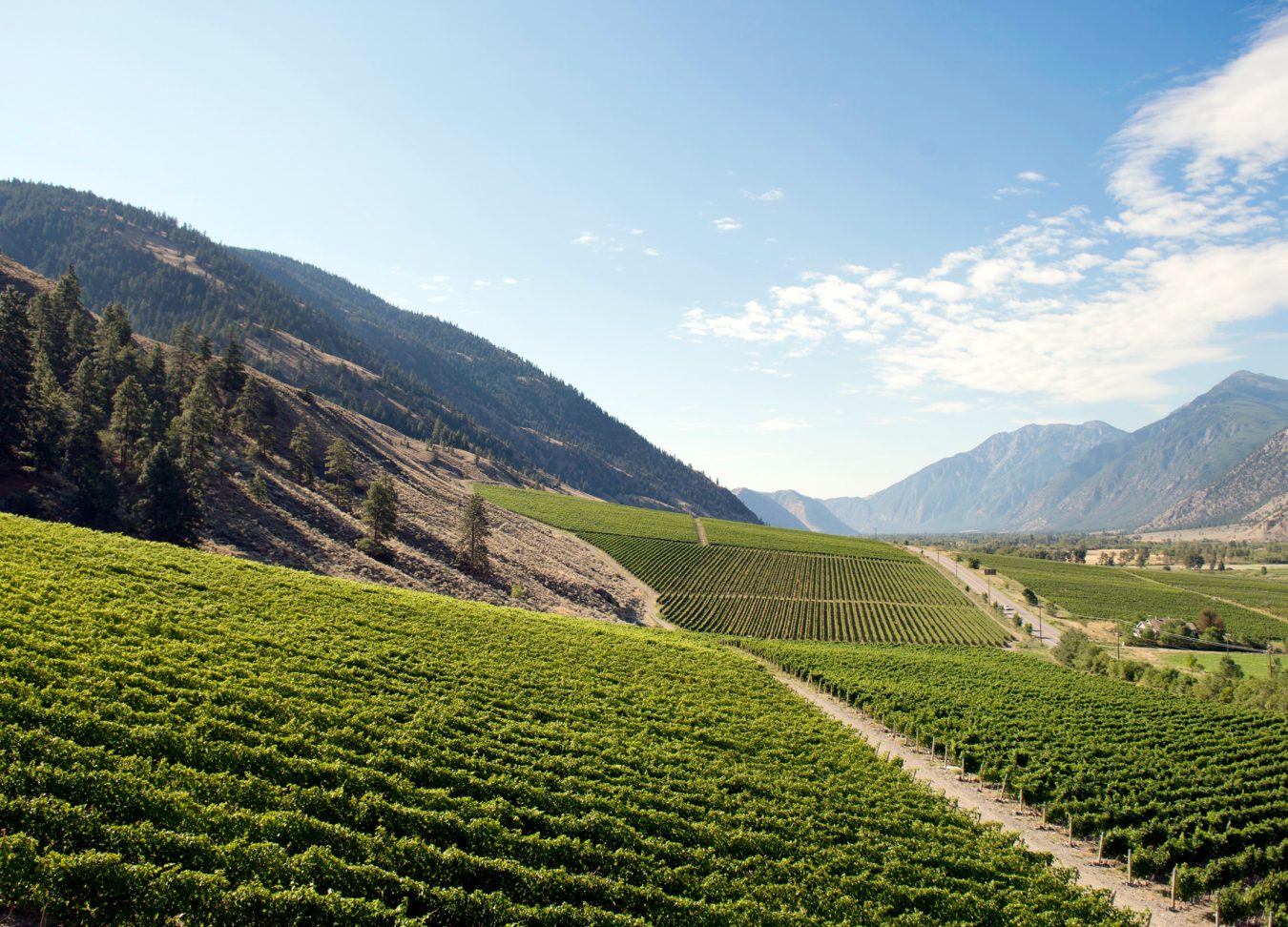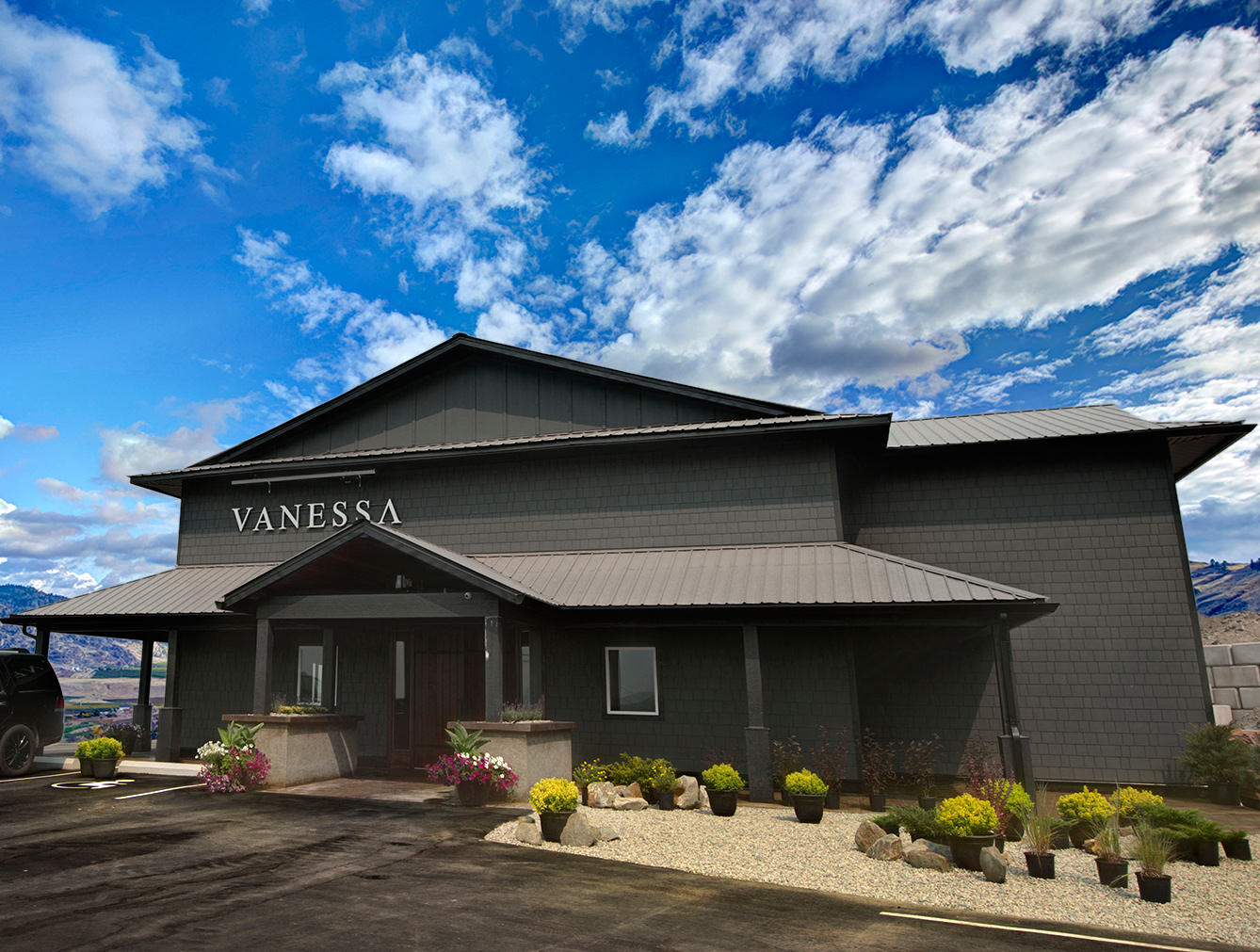It would be apt to say that Vanessa Vineyard got off to a rocky start.
In 2006, Vancouver-born businessman Suki Sekhon invested in 220 acres of hillside property in the Similkameen Valley with the intention of planting grapes. The problem was that Vanessa Vineyard, as he called it, was comprised of rock—not gravel but bedrock, and boulders the size of automobiles.
Sekhon initially planned on selling his crop to local wine producers; even though he realized there was no certainty he would have buyers for all of the grapes each vintage, he wanted to plant them anyway. And because the fruit was of such high quality, he decided to try making his own wine as well. Sekhon asked his friend, oenophile John Welson (a retiree from the financial industry), to partner with him on the venture. Welson thought he was crazy, but Sekhon convinced him, saying, “It might be a bit bumpy to begin, but we’ll figure it out.” They gathered some of the best talent in British Columbia’s industry to consult: Okanagan wine pioneer Harry McWatters; respected winemaker Howard Soon; and the unrivalled duo of vineyard development, Richard Cleave and Robert Goltz.
The valley had a shortage of red grapes and demand was increasing, Sekhon was told, so that’s what they set out to grow. The hot, sloping site was perfect for robust varieties including cabernet sauvignon and merlot. To begin, they decided to plant 75 acres. That’s when the fun truly began—although no one was laughing at the time.
To break down the rock into manageable pieces and make the land suitable for planting, they brought in road building equipment. The terrain was so hard that it broke the teeth of the rock crusher—something that crews had never even seen happen in the mines.
Even once the rocks were dealt with, there was still bedrock below the surface soils, and just pounding trellising posts was a lesson in patience. Nathan Goltz (son of original advisory team member Robert Goltz) has since taken over as vineyard manager; he was there during planting, or “the hell days,” as he likes to call them. “It was so much to get through, compared to other places,” Goltz admits, seated inside the Cawston property’s tasting room. “We’d hit rock digging, vines were falling into ditches, there were guys just walking behind the tractor picking up the mess.” Simultaneously, workers needed to lay irrigation lines, as the vines had to be watered immediately; it was their only chance of survival in the heat. Despite their efforts, 25 per cent of the newly planted vines died.
Still, more than a decade and seven vintages of wine later, Vanessa Vineyard shows substantial promise. The site does supply a significant portion of its grapes to other wineries; the rest is used for its own Vanessa Vineyard label wines, which in these early vintages have proven the specialness of the terroir. The syrah is a standout, rich and complex, and the merlot is a top seller in the tasting room; and an outstanding new addition released this fall, a single-varietal cabernet sauvignon, is certain to garner devotees. These achievements have spurred longer-term plans for additional vines and an estate winemaking facility.
The wines—which are only available through its wine club, in its tasting room, and in select restaurants—are also getting an upgrade, courtesy of winemaking consultant Soon. After 37 years with Andrew Peller Limited, Soon stepped down from the company—but not quite ready to hang up his hat entirely, he accepted the role of Vanessa Vineyard’s master winemaker. “Why would I retire?” he says while walking around the vineyard. “I have to have a reason to get up in the morning. I can’t just turn it off, I have a mission to get people to drink more B.C. wine.”
Its location may have seemed arid and unforgiving, but once the grapes found root in the rugged soils, Vanessa Vineyard’s potential was exposed. Success may not grow on trees, but with perseverance and heart, it can definitely grow on vines.
There is more B.C. wine to discover.












